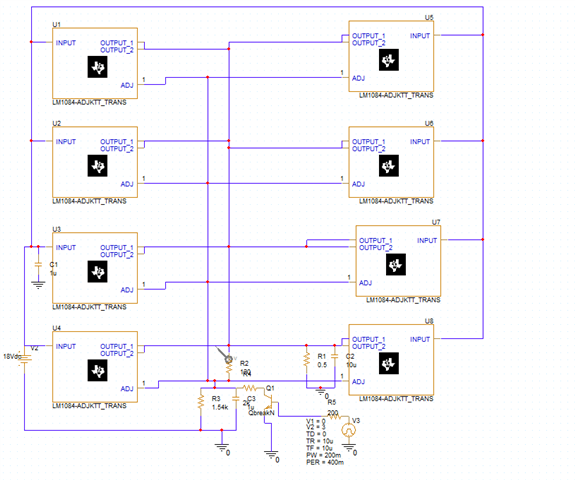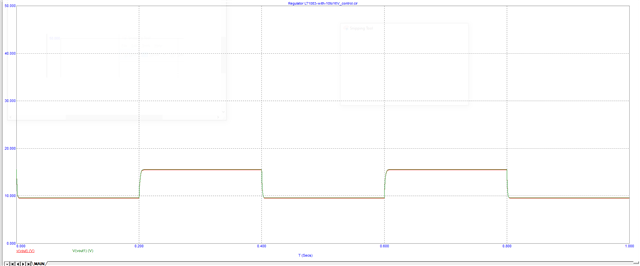Other Parts Discussed in Thread: TPS7A47
Hi,
We are trying to design a voltage regulator, and we need an output of 2A from each one of the LM1084 regulators that are present in our circuit (I wasn't able to upload the .opj file so I'm attaching a screenshot).
I'm unable to define a 0.5 OHM load at the output. After running the simulation, I receive the following error:" Less than 2 connections at node GND".
we need to verify the output current (2A from each output rail) with the simulation, can you please assist?

Thanks!
Anna


